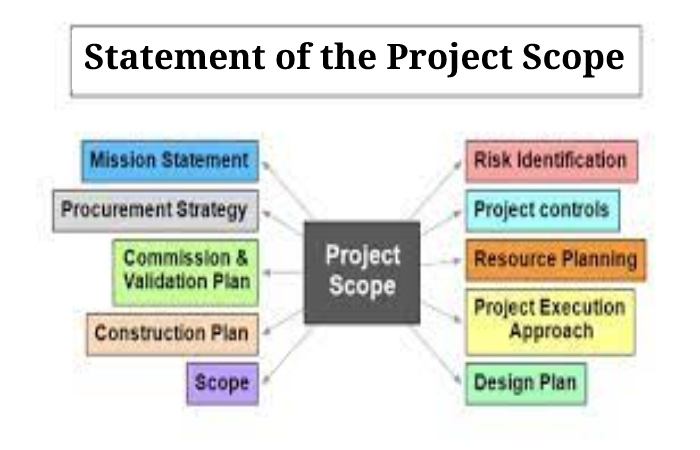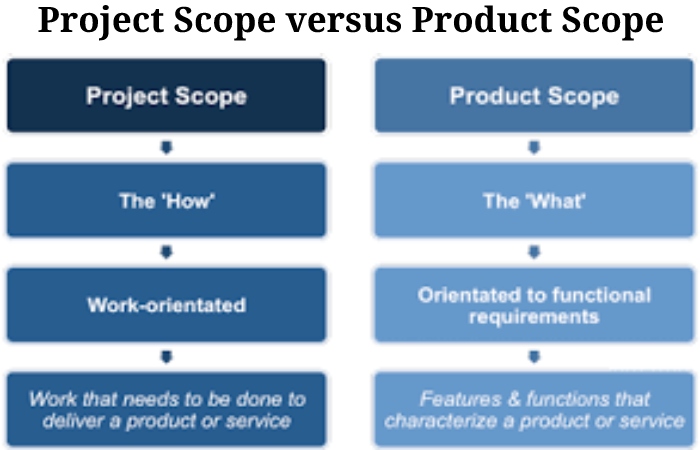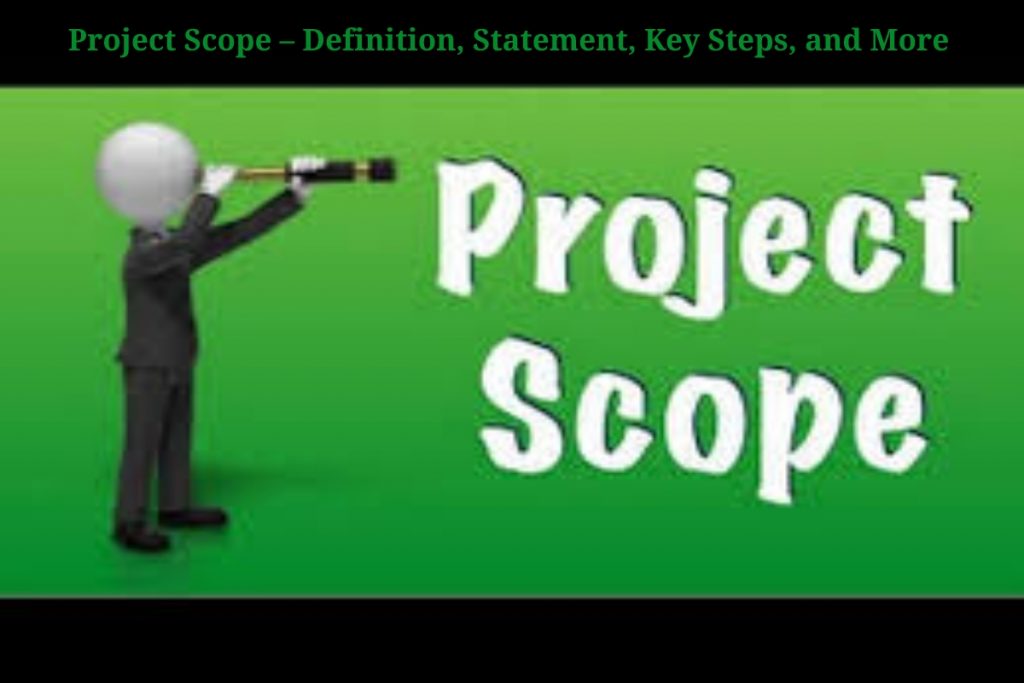Project Scope Definition
The project scope is a detailed overview of all aspects of a project, including all related activities, resources, timelines and deliverables, and project boundaries. And also, it also describes the main stakeholders, processes, assumptions, constraints, the project’s purpose, what includes, and what is not—all of this essential information document in a scope statement.
Statement of the Project Scope

The Project Scope Statement is a key text that delivers all stakeholders a clear understanding of why the project initiates and defines its key objectives. Most statements will comprise these elements:
- A Project Statement of Work (SoW), a detailed breakdown of all the work to be done by a project team and any important items may affect the outcome.
- Constraints that could limit or negatively affect the project’s outcome, including resources, supply issues, time, or lack of information.
Scope exclusions, which can be anything that is not part of the project or its deliverables. - Milestones that provide the exact date when something will be delivered or completed.
- And also, the final deliverables will provide to the client at the end of the project, such as a report, software functionality, any analysis or process knowledge, or any product or service that a client needs.
- Acceptance criteria are detailing exactly how success will measure.
- Final approval whereby the client will sign the scope statement confirming that all parameters include and that the document is complete and correct.
Key Steps to Define the Project Scope
Properly important the project scope is the key to positively managing it. Here are the steps you can get income to limit:
- Work with key stakeholders to describe and create a scope statement identifying what’s in and out of scope. Collaboration with stakeholders helps ensure that essential things are not lost.
- Identify, document, and communicate assumptions.
- Assumptions relate to the project and are assumed to be true for the project’s life.
- Assumptions are needed to provide a cost estimate and schedule for delivery during the planning phase.
- And also, get buy-in to the scope statement with the most affected stakeholders to make sure everyone is on the same page.
Management of Project Scope
In addition to ongoing review and monitoring of project activities, some steps need to take to manage to avoid scope deviation.
Identify if there are any changes to your project requirements. This is a vital step as these changes directly affect the objectives of the project and all related activities.
Identify how the changes will affect the project. Before you can adjust it, you must understand where and how changes affect the outcome.
Get approval for changes before making a business or management change. And also, implement approved changes on time to reduce delays and risks.
Model of Project Scope
Introduction
The introduction delivers a high-level overview of the project.
Project Scope
Would you please indicate the scope of the project? This should comprise what the project does and does not understand. This will help clarify what include in the project and avoid confusion among project team members and stakeholders.
Deliverable Projects
And also, indicate the expected deliverables for the project.
Project Acceptance Criteria
Define the acceptance criteria. What objectives will achieve, and how will success measure?
Project Exclusions
And also, it does not include in it.
The Limitations of the Project
Please provide any project restrictions, firm dates, personnel or equipment limitations, financial or budgetary restrictions, or technical constraints.
By developing a solid understanding of a project’s purpose and clearly defining, documenting, and managing it, you can ensure that you are well-position to complete a project without having to deal with scope deviation.
The Importance of Defining the Project Scope
These are the benefits that a statement offers to any organization embarking on a new initiative. This:
- Articulates what the project involves so that all stakeholders can understand what involve;
- It provides a road-map that managers can use to assign tasks, plan work, and also budget appropriately;
- And also, it helps focus team members on common goals;
- Prevent projects, especially the more complex ones, from expanding beyond the established vision.
Project managers typically find that defining the ensures that projects target and executed according to expectations. And also, scope provides a solid foundation for managing a project as it progresses and helps ensure that resources do not divert or wasted on items that are beyond reach.
Project Scope versus Product Scope

It should not confuse with the scope of the product. The product scope defines the capabilities, characteristics, characteristics, and functions of the final project result. And also, project managers should create a statement and should use both it and its statements to support each other and also establish for their organizations a clear understanding of what each project is trying to achieve.
Conclusion
It is the part of project preparation that involves determining and documenting a list of project-specific objectives, deliverables, tasks, costs, and deadlines. Documenting, called a scope statement or terms of reference, explains the boundaries of the project, establishes the responsibilities of each team member, and shows the procedures for project verification and approval.
During the project, this documentation helps the project team stay focused and on task. The scope statement also delivers the team with guidance in making decisions about change requests during the project.
Note: It statement should not confuse with its charter. And also, a project letter documents that the project exists.

